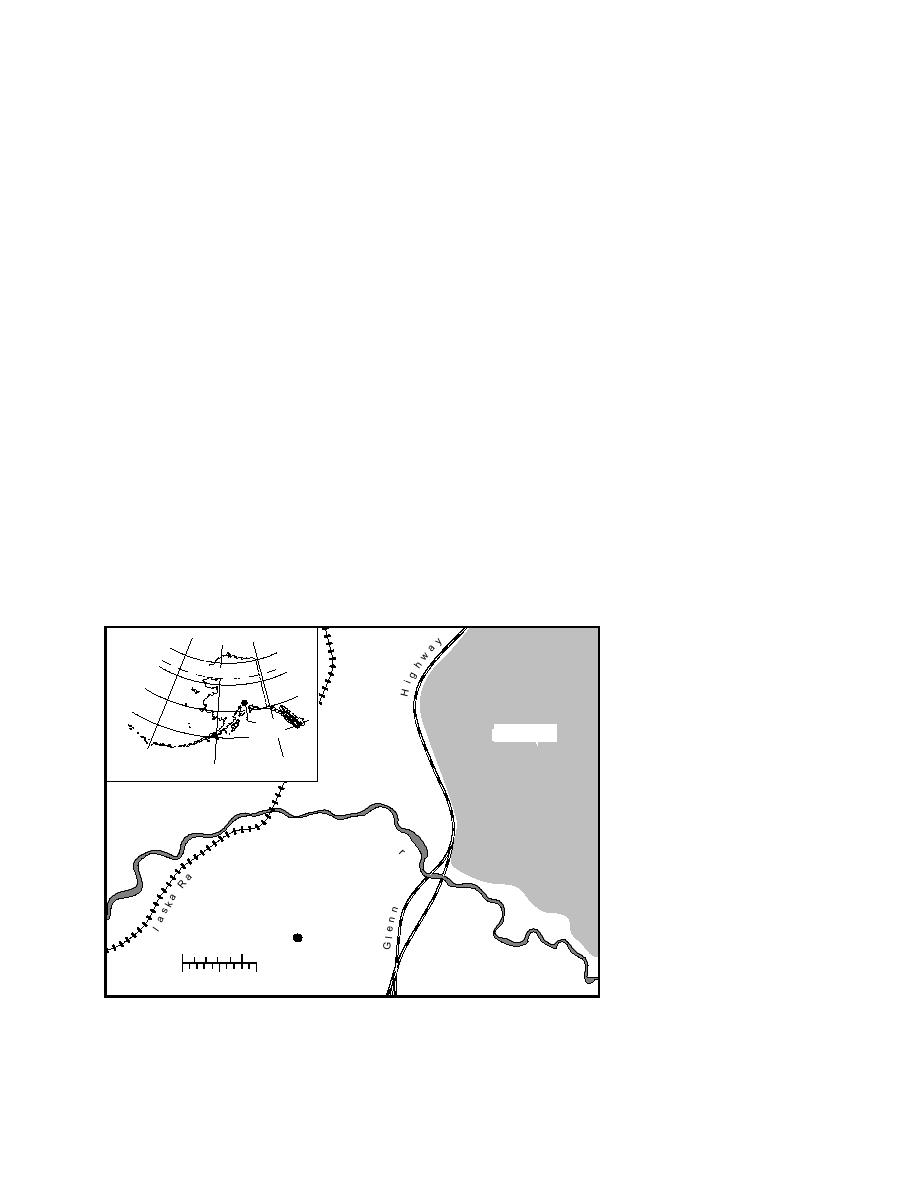
Geophysical Investigations at a
Buried Disposal Site on Fort Richardson, Alaska
ALLAN J. DELANEY, JEFFREY C. STRASSER, DANIEL E. LAWSON,
STEVEN A. ARCONE, AND EDWARD B. EVENSON
east by hummocky terrain. Some earth material
INTRODUCTION
has been removed from the south-facing hill slope
The Poleline Road Disposal Area (PRDA) is an
and may have been used as fill in the disposal
area. A gravel road extending from Poleline Road
abandoned site containing buried hazardous
crosses the center of the 300- 500-ft (90- 150-m)
materials and volatile organic compounds in prox-
disturbed area.
imity to multiple groundwater horizons. Exten-
sive environmental investigations and remedial
In 1990 PRDA was identified by former mili-
activities have followed their discovery. The
tary personnel, and information on materials and
chemicals that may have been buried there was
PRDA, on Fort Richardson near Anchorage, Alaska
also provided. The list of probable buried items
(Fig. 1), is located in a low-lying wooded area,
included solvents, smoke canisters, World War II
near the origin of Fossil Creek. The site is bounded
vintage munitions, and kits for personnel identi-
on the west by two small hills of glacial deposits,
fication of mustard gas. Some of the munitions
on the south by a marsh, and on the north and
were reportedly destroyed
in trenches, while others
m a y have been buried
70
directly. A 1954 Army Post
65
Arctic Circle
map also identified the area
60
as a potential dump.
ALASKA
55
In 1990 the U.S. Army
Site
Toxic and Hazardous Mate-
Eagle River
Location
Eagle River
rials Agency (USATHAMA,
180
140
now the Army Environ-
160
mental Center, AEC) con-
tracted Environmental Sci-
ence and Engineering, Inc.
Ea g l e
Ri
(ESE, Seattle, Washington)
ve
ad
to conduct a preliminary
o
R
l
i
site investigation, which
included a surface geo-
p h y s i c a l survey (using
Poleline
electromagnetic conduc-
Site
A
tivity, magnetic techniques,
0
0.5 mi.
and ground-penetrating ra-
0
0.5
1.0 km
dar), installation of five
wells to monitor ground-
Figure 1. Poleline Road Disposal Area located on Fort Richardson near the town of water contamination, and
Eagle River, Alaska. The site is approximately 1.3 km west of the Glenn Highway. 10 shallow soil borings. The



 Previous Page
Previous Page
